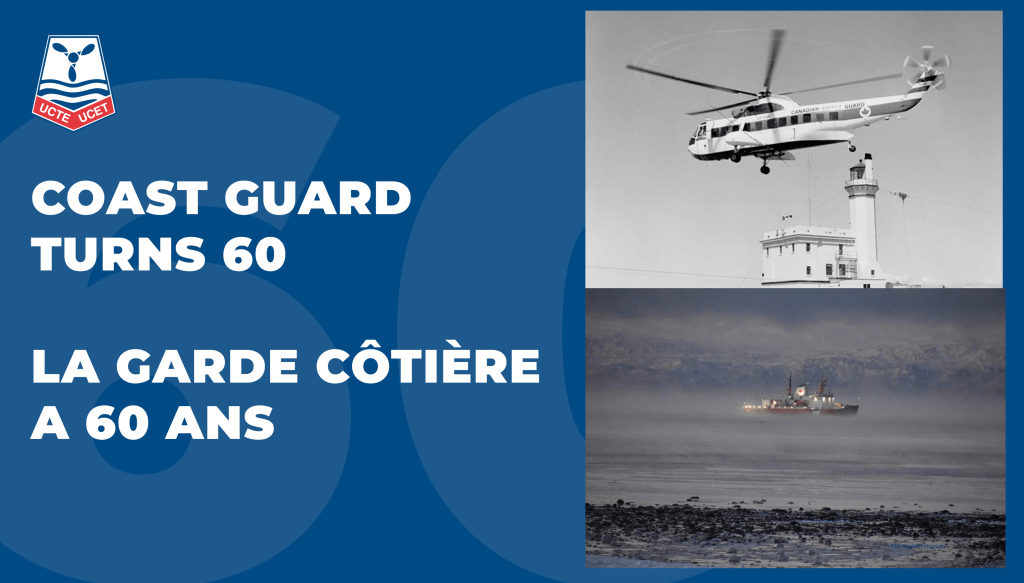Coast Guard turns 60
On January 26, 1962, the federal government created the Canadian Coast Guard (CCG). However, while it got a new name and structure, the CCG had it’s start as the “Marine Branch” of the Department of Marine and Fisheries in 1867. In 1936 it came under the jurisdiction of the Department of Transport when it was created. Finally in 1962, it officially became the Coast Guard we know today where many of our members work.
Since the formation of the Union of Canadian Transportation Employees (UCTE) in 1966 our members have proudly served Canada at the CCG. Prior to that time one of our founding unions, the Canadian Marine National Employees, represented the needs of the Marine branch and the CCG employees.
In 1995, the CCG moved from the Department of Transport to the Department of Fisheries and Oceans (DFO). After much lobbying by UCTE, in 2005 the Coast Guard was declared a special operating agency of the DFO.
Today, the Canadian Coast Guard operates a civilian fleet of ships and provides key maritime services to Canadians such as icebreaking, marine search and rescue, aids to navigation, marine pollution response and northern resupply. The CCG is a key partner helping Canada maintain clean, safe, secure, healthy, and productive waters and coastlines.
While most people think of the distinctive red and while ships when the Coast Guard is mentioned it is so much more. It operates 119 vessels of varying sizes and 23 helicopters, along with a variety of smaller craft. It has responsibility for 266 Lighthouses, one of the largest collections in the world. It maintains a networks of over 90 bases and stations. It provides navigational buoys and foghorns to assist safe marine navigation on the Atlantic, Pacific, and Arctic coasts as well as on the inland waterways of the St. Lawrence Seaway and Great Lakes.
Canada’s first lighthouses were established in the early 1700’s to keep watch over our coasts and provide safety to all forms of ocean-going craft. During the Second World War the keepers were an important part of the coastal defence force. This was demonstrated when in 1942 the Estevan Lighthouse was fired upon. Beginning in the 1970s, 264 lighthouses were automated. 60 are still staffed by UCTE members and in some cases with their families. One lighthouse is both automated and staffed – the light on at Machias Seal Island has two members standing on guard to protect Canadian sovereignty. CCG represents Canada at the International Association of Marine Aids to Navigation and Lighthouse Authorities (IALA).
In 2018 the CCG announced the creation of an Arctic Region to: improve collaboration with organizations and governments of the: Inuit, First Nation, and Métis Nation in better meeting the unique needs of Canada’s Arctic communities.
The Canadian Coast Guards Latin motto “Saluti Primum, Auxilio Semper” means “Safety First, Service Always”. This is at the core of every UCTE member that works for the CCG.
Congratulations to all of our past and current CCG members on 60 years of service and dedication.
https://www.ccg-gcc.gc.ca/corporation-information-organisation/history-eng.html
https://www.ccg-gcc.gc.ca/corporation-information-organisation/history-fra.html
https://www.ccg-gcc.gc.ca/ccg60gcc-eng.html
https://www.ccg-gcc.gc.ca/ccg60gcc-fra.html
https://www.thecanadianencyclopedia.ca/en/article/canadian-coast-guard
https://www.thecanadianencyclopedia.ca/fr/article/garde-cotiere-canadienne
